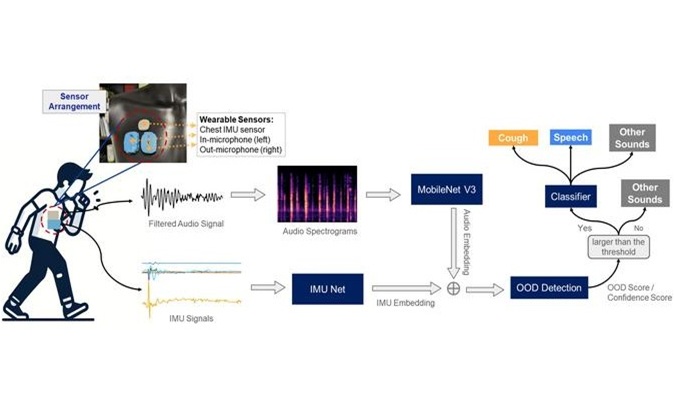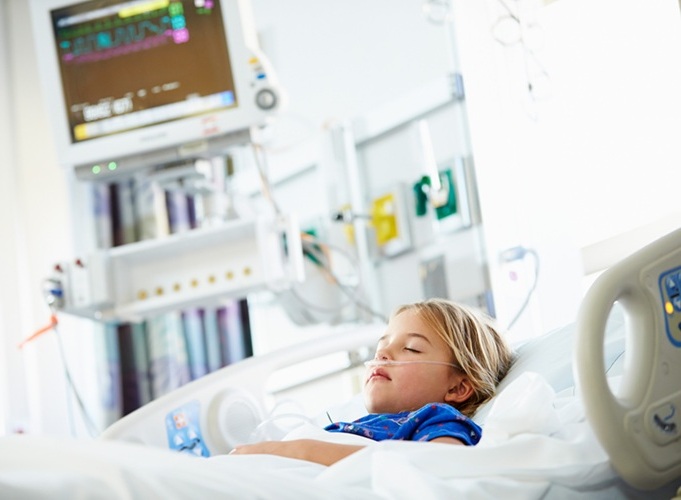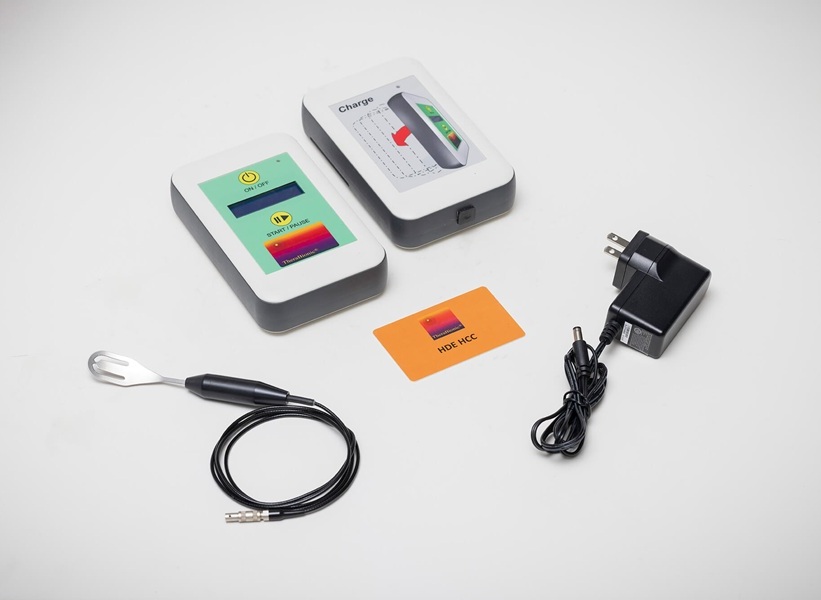Interventional Cryotherapy Platform Harnesses Liquid Nitrogen
|
By HospiMedica International staff writers Posted on 11 Feb 2019 |

Image: Liquid nitrogen can flash-freeze diseased esophageal tissue (Photo courtesy of CSA Medical).
A new minimally invasive spray cryotherapy system treats the entire spectrum of esophageal disease, from Barrett's Esophagus (BE) to cancer.
The CSA Medical (Lexington, MA, USA) truFreeze cryotherapy system uses an extremely cold liquid nitrogen spray to flash-freeze and destroy unwanted tissue in patients suffering from BE, esophageal cancer, and airway obstructions. The system also enables tissue rejuvenation from underlying healthy tissue, in contrast to the scar tissue that forms after heat-based modalities such as radio-frequency ablation (RFA). Using the extreme cold of liquid nitrogen (-196°C) also helps circumvent potential problems resulting from other cryogens such as nitrous oxide (-88°C), which cannot get the tissue cold enough or act fast enough to penetrate and ablate cancer cells.
The truFreeze System offers two venting options: active venting, in which an onboard suction is used to evacuate gas from the ablation area via a cryodecompression tube (CDT), which is used when spraying distal to an obstruction or flaccid organ that could potentially collapse; and passive venting, in which gas disperses from the ablation area by natural diffusion, without suction. The diameter of the area through which gas vents passively must be adequate to ensure distention does not occur. Passive venting may be used with a vent tube when spraying proximal to a resistor where the lumen is open.
“I recommend spray cryotherapy ablation to many of my esophageal cancer patients because it penetrates deeper than other ablation therapies, without the scarring and post-procedural pain associated with radiofrequency burning or balloon ablation,” said Professor Vanessa Shami, MD, of the University of Virginia Medical Center (Charlottesville, USA). “The ability to perform the procedure as an outpatient therapy that allows patients to go home the same day provides significant quality of life benefits to a population that may be suffering from a range of health challenges.”
Liquid nitrogen is a colorless cryogenic fluid which boils at -196 °C (at sea-level atmospheric pressure), causing rapid freezing on contact with living tissue. As the liquid-to-gas expansion ratio of nitrogen is 1:694, it boils to fill a volume with nitrogen gas very quickly. It is therefore stored in special insulated containers called Dewar flasks that are vented to prevent pressure buildup. Depending on the design, it can be stored for hours or for up to a few weeks.
Related Links:
CSA Medical
The CSA Medical (Lexington, MA, USA) truFreeze cryotherapy system uses an extremely cold liquid nitrogen spray to flash-freeze and destroy unwanted tissue in patients suffering from BE, esophageal cancer, and airway obstructions. The system also enables tissue rejuvenation from underlying healthy tissue, in contrast to the scar tissue that forms after heat-based modalities such as radio-frequency ablation (RFA). Using the extreme cold of liquid nitrogen (-196°C) also helps circumvent potential problems resulting from other cryogens such as nitrous oxide (-88°C), which cannot get the tissue cold enough or act fast enough to penetrate and ablate cancer cells.
The truFreeze System offers two venting options: active venting, in which an onboard suction is used to evacuate gas from the ablation area via a cryodecompression tube (CDT), which is used when spraying distal to an obstruction or flaccid organ that could potentially collapse; and passive venting, in which gas disperses from the ablation area by natural diffusion, without suction. The diameter of the area through which gas vents passively must be adequate to ensure distention does not occur. Passive venting may be used with a vent tube when spraying proximal to a resistor where the lumen is open.
“I recommend spray cryotherapy ablation to many of my esophageal cancer patients because it penetrates deeper than other ablation therapies, without the scarring and post-procedural pain associated with radiofrequency burning or balloon ablation,” said Professor Vanessa Shami, MD, of the University of Virginia Medical Center (Charlottesville, USA). “The ability to perform the procedure as an outpatient therapy that allows patients to go home the same day provides significant quality of life benefits to a population that may be suffering from a range of health challenges.”
Liquid nitrogen is a colorless cryogenic fluid which boils at -196 °C (at sea-level atmospheric pressure), causing rapid freezing on contact with living tissue. As the liquid-to-gas expansion ratio of nitrogen is 1:694, it boils to fill a volume with nitrogen gas very quickly. It is therefore stored in special insulated containers called Dewar flasks that are vented to prevent pressure buildup. Depending on the design, it can be stored for hours or for up to a few weeks.
Related Links:
CSA Medical
Latest Surgical Techniques News
- Novel Glue Prevents Complications After Breast Cancer Surgery
- Breakthrough Brain Implant Enables Safer and More Precise Drug Delivery
- Bioadhesive Sponge Stops Uncontrolled Internal Bleeding During Surgery
- Revolutionary Nano Bone Material to Accelerate Surgery and Healing
- Superior Orthopedic Implants Combat Infections and Quicken Healing After Surgery
- Laser-Based Technique Eliminates Pancreatic Tumors While Protecting Healthy Tissue
- Surgical Treatment of Severe Carotid Artery Stenosis Benefits Blood-Brain Barrier
- Revolutionary Reusable Duodenoscope Introduces 68-Minute Sterilization
- World's First Transcatheter Smart Implant Monitors and Treats Congestion in Heart Failure
- Hybrid Endoscope Marks Breakthrough in Surgical Visualization
- Robot-Assisted Bronchoscope Diagnoses Tiniest and Hardest to Reach Lung Tumors
- Diamond-Titanium Device Paves Way for Smart Implants that Warn of Disease Progression
- 3D Printable Bio-Active Glass Could Serve as Bone Replacement Material
- Spider-Inspired Magnetic Soft Robots to Perform Minimally Invasive GI Tract Procedures
- Micro Imaging Device Paired with Endoscope Spots Cancers at Earlier Stage
- AI Spine Model Could Reduce Surgical Risks
Channels
Critical Care
view channel
Origami Robots to Deliver Medicine Less Invasively and More Effectively
Delivering medicine to ulcers or other internal sites often requires invasive procedures that can disrupt surrounding tissues and lengthen recovery times. Traditional magnetic actuators used in soft robotics... Read more
Improved Cough-Detection Technology Aids Health Monitoring
Coughing serves as an important biomarker for tracking a variety of conditions and can help monitor the progress of respiratory diseases or predict when someone’s asthma is being exacerbated.... Read morePatient Care
view channel
Revolutionary Automatic IV-Line Flushing Device to Enhance Infusion Care
More than 80% of in-hospital patients receive intravenous (IV) therapy. Every dose of IV medicine delivered in a small volume (<250 mL) infusion bag should be followed by subsequent flushing to ensure... Read more
VR Training Tool Combats Contamination of Portable Medical Equipment
Healthcare-associated infections (HAIs) impact one in every 31 patients, cause nearly 100,000 deaths each year, and cost USD 28.4 billion in direct medical expenses. Notably, up to 75% of these infections... Read more
Portable Biosensor Platform to Reduce Hospital-Acquired Infections
Approximately 4 million patients in the European Union acquire healthcare-associated infections (HAIs) or nosocomial infections each year, with around 37,000 deaths directly resulting from these infections,... Read moreFirst-Of-Its-Kind Portable Germicidal Light Technology Disinfects High-Touch Clinical Surfaces in Seconds
Reducing healthcare-acquired infections (HAIs) remains a pressing issue within global healthcare systems. In the United States alone, 1.7 million patients contract HAIs annually, leading to approximately... Read moreHealth IT
view channel
Printable Molecule-Selective Nanoparticles Enable Mass Production of Wearable Biosensors
The future of medicine is likely to focus on the personalization of healthcare—understanding exactly what an individual requires and delivering the appropriate combination of nutrients, metabolites, and... Read moreBusiness
view channel
Philips and Masimo Partner to Advance Patient Monitoring Measurement Technologies
Royal Philips (Amsterdam, Netherlands) and Masimo (Irvine, California, USA) have renewed their multi-year strategic collaboration, combining Philips’ expertise in patient monitoring with Masimo’s noninvasive... Read more
B. Braun Acquires Digital Microsurgery Company True Digital Surgery
The high-end microsurgery market in neurosurgery, spine, and ENT is undergoing a significant transformation. Traditional analog microscopes are giving way to digital exoscopes, which provide improved visualization,... Read more
CMEF 2025 to Promote Holistic and High-Quality Development of Medical and Health Industry
The 92nd China International Medical Equipment Fair (CMEF 2025) Autumn Exhibition is scheduled to be held from September 26 to 29 at the China Import and Export Fair Complex (Canton Fair Complex) in Guangzhou.... Read more














